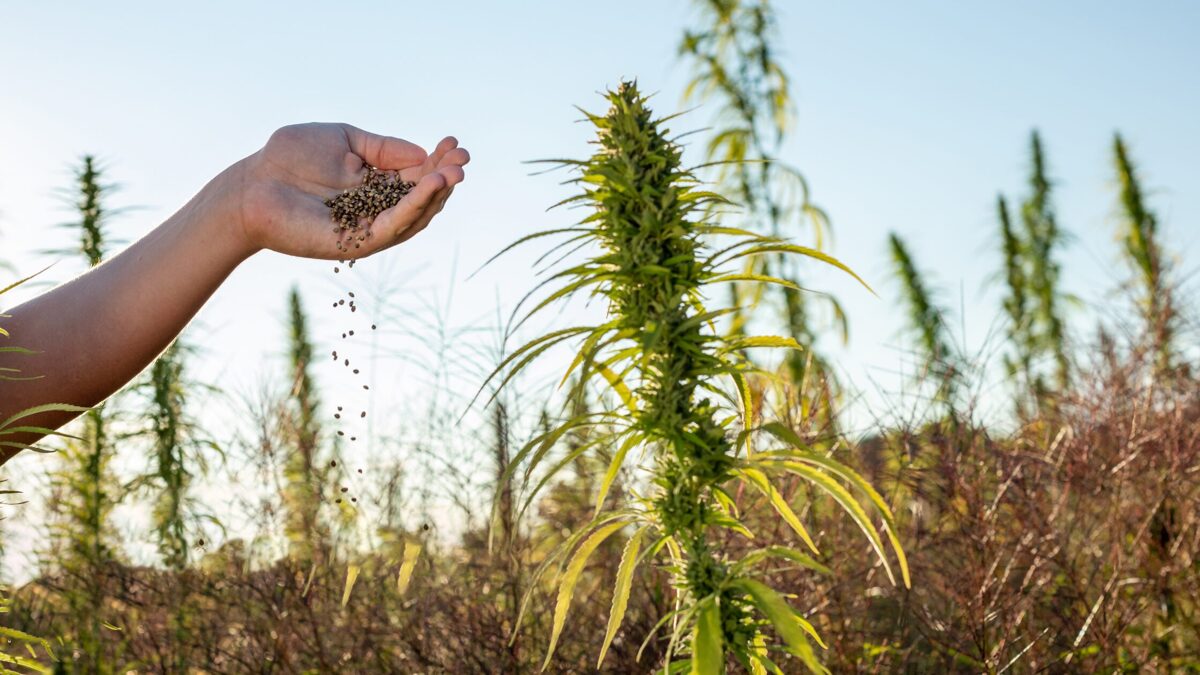Sustainable Practices in Hemp Processing
October 19, 2024 at 6:49 am,
No comments

As the world increasingly turns to sustainable solutions, the hemp industry stands out as a beacon of eco-friendliness. Hemp, a versatile and resilient plant, offers numerous environmental benefits, and its processing can also align with sustainable practices. In this post, we’ll explore various eco-friendly techniques for processing hemp that minimize waste and reduce environmental impact.
Utilizing All Parts of the Hemp Plant
One of the most significant advantages of hemp is that every part of the plant can be utilized, leading to a reduction in waste. Traditionally, hemp has been processed for its fibers, seeds, and flowers. However, innovative processing techniques allow for the use of lesser-known components, such as stalks and leaves, in various applications (C. M., 2022).
Hemp Fiber: The fibers from the stalk can be used to produce textiles, ropes, and biodegradable composites. These materials are not only strong but also biodegradable, reducing reliance on synthetic alternatives (K. D., 2023).
Hemp Seed: The seeds are packed with nutrients and can be processed into oil, protein powder, and food products. The residual cake from seed oil extraction can be used as animal feed or added to soil as a natural fertilizer.
Hemp Hurds: The woody core of the stalk, known as hurds, can be used in the production of biodegradable building materials, insulation, and even animal bedding.
By embracing the principle of “zero waste,” processors can significantly decrease the environmental footprint of hemp products.
Water-Saving Techniques
Hemp is a drought-resistant crop, requiring less water than many conventional crops. However, water conservation during processing is equally important. Some innovative practices include:
Closed-Loop Water Systems: Implementing systems that recycle water used in processing can greatly reduce water consumption and pollution. This method minimizes the discharge of wastewater into the environment (L. P., 2021).
Rainwater Harvesting: Facilities can install rainwater harvesting systems to collect and utilize rainwater for processing, further decreasing reliance on municipal water supplies.
Renewable Energy Sources
Transitioning to renewable energy sources in hemp processing facilities not only reduces greenhouse gas emissions but also enhances sustainability. Facilities can consider the following options:
Solar Energy: Installing solar panels can provide a significant portion of the energy needed for processing operations, reducing dependence on fossil fuels.
Biomass Energy: Utilizing waste materials from hemp processing as a biomass energy source can create a self-sustaining energy cycle, further decreasing environmental impact.
Eco-Friendly Chemicals and Practices
Using environmentally safe chemicals in processing not only protects workers and consumers but also reduces harmful pollutants released into the environment. Some sustainable practices include:
Natural Dyes: When processing hemp textiles, opting for natural dyes made from plant-based materials can eliminate harmful chemical runoff that typically occurs with synthetic dyes.
Mechanical Processing: Employing mechanical methods for separating fibers and seeds rather than chemical treatments can minimize the introduction of harmful substances into the processing stream (C. M., 2022).
Sustainable Packaging Solutions
Incorporating sustainable packaging solutions is crucial for minimizing the environmental impact of hemp products. Considerations include:
Biodegradable Materials: Using biodegradable or compostable materials for packaging can significantly reduce plastic waste.
Minimalist Packaging: Designing packaging that minimizes excess materials not only reduces waste but also lowers transportation costs and emissions.
Conclusion
The hemp industry has the potential to lead the way in sustainable practices, from cultivation to processing. By adopting eco-friendly techniques that minimize waste and environmental impact, we can harness the full potential of this remarkable plant.
As the industry continues to evolve, it’s crucial for processors and consumers alike to prioritize sustainability. For those looking to dive deeper into the world of hemp and its sustainable applications, consider our upcoming e-workshops, where you'll learn innovative techniques and best practices for processing hemp sustainably.
Sources
C. M. (2022). Sustainability in Hemp Processing: A Comprehensive Guide. Journal of Hemp Research.
K. D. (2023). The Role of Hemp in Sustainable Agriculture. International Journal of Agronomy.
L. P. (2021). Environmental Benefits of Hemp Cultivation and Processing. Environmental Science & Policy.
Utilizing All Parts of the Hemp Plant
One of the most significant advantages of hemp is that every part of the plant can be utilized, leading to a reduction in waste. Traditionally, hemp has been processed for its fibers, seeds, and flowers. However, innovative processing techniques allow for the use of lesser-known components, such as stalks and leaves, in various applications (C. M., 2022).
Hemp Fiber: The fibers from the stalk can be used to produce textiles, ropes, and biodegradable composites. These materials are not only strong but also biodegradable, reducing reliance on synthetic alternatives (K. D., 2023).
Hemp Seed: The seeds are packed with nutrients and can be processed into oil, protein powder, and food products. The residual cake from seed oil extraction can be used as animal feed or added to soil as a natural fertilizer.
Hemp Hurds: The woody core of the stalk, known as hurds, can be used in the production of biodegradable building materials, insulation, and even animal bedding.
By embracing the principle of “zero waste,” processors can significantly decrease the environmental footprint of hemp products.
Water-Saving Techniques
Hemp is a drought-resistant crop, requiring less water than many conventional crops. However, water conservation during processing is equally important. Some innovative practices include:
Closed-Loop Water Systems: Implementing systems that recycle water used in processing can greatly reduce water consumption and pollution. This method minimizes the discharge of wastewater into the environment (L. P., 2021).
Rainwater Harvesting: Facilities can install rainwater harvesting systems to collect and utilize rainwater for processing, further decreasing reliance on municipal water supplies.
Renewable Energy Sources
Transitioning to renewable energy sources in hemp processing facilities not only reduces greenhouse gas emissions but also enhances sustainability. Facilities can consider the following options:
Solar Energy: Installing solar panels can provide a significant portion of the energy needed for processing operations, reducing dependence on fossil fuels.
Biomass Energy: Utilizing waste materials from hemp processing as a biomass energy source can create a self-sustaining energy cycle, further decreasing environmental impact.
Eco-Friendly Chemicals and Practices
Using environmentally safe chemicals in processing not only protects workers and consumers but also reduces harmful pollutants released into the environment. Some sustainable practices include:
Natural Dyes: When processing hemp textiles, opting for natural dyes made from plant-based materials can eliminate harmful chemical runoff that typically occurs with synthetic dyes.
Mechanical Processing: Employing mechanical methods for separating fibers and seeds rather than chemical treatments can minimize the introduction of harmful substances into the processing stream (C. M., 2022).
Sustainable Packaging Solutions
Incorporating sustainable packaging solutions is crucial for minimizing the environmental impact of hemp products. Considerations include:
Biodegradable Materials: Using biodegradable or compostable materials for packaging can significantly reduce plastic waste.
Minimalist Packaging: Designing packaging that minimizes excess materials not only reduces waste but also lowers transportation costs and emissions.
Conclusion
The hemp industry has the potential to lead the way in sustainable practices, from cultivation to processing. By adopting eco-friendly techniques that minimize waste and environmental impact, we can harness the full potential of this remarkable plant.
As the industry continues to evolve, it’s crucial for processors and consumers alike to prioritize sustainability. For those looking to dive deeper into the world of hemp and its sustainable applications, consider our upcoming e-workshops, where you'll learn innovative techniques and best practices for processing hemp sustainably.
Sources
C. M. (2022). Sustainability in Hemp Processing: A Comprehensive Guide. Journal of Hemp Research.
K. D. (2023). The Role of Hemp in Sustainable Agriculture. International Journal of Agronomy.
L. P. (2021). Environmental Benefits of Hemp Cultivation and Processing. Environmental Science & Policy.
